Something went wrong!
Hang in there while we get back on track
Best attractions in Piedmont
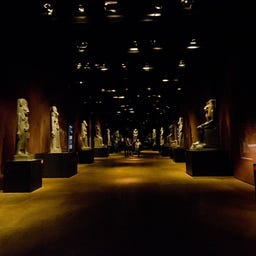
The Museo Egizio in Turin is one of the world's most important collections of Egyptian artifacts and the second-largest museum of its kind outside Egypt. With over 37,000 exhibits, including mummies, papyrus scrolls, and precious burial goods, it offers a fascinating journey through 4,000 years of history, art, and archaeology.
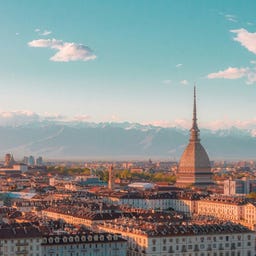
The Mole Antonelliana is undeniably Turin's most iconic landmark – a towering architectural masterpiece. Originally designed in 1863 by Alessandro Antonelli as a synagogue, it was later repurposed as a monument to Italian unity.
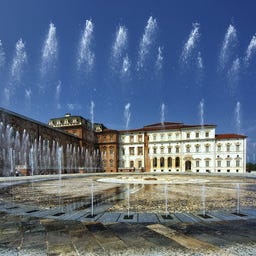
The Reggia di Venaria Reale near Turin is one of the most significant Baroque palaces in Italy, commissioned in 1658 by Duke Carlo Emanuele II as a hunting residence. After a tumultuous history, including a French invasion and military use, the UNESCO World Heritage site has been shining anew since an extensive restoration in 2007.
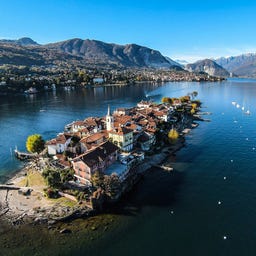
At the foot of the Pennine and Lepontine Alps, Lake Maggiore stretches out as the second largest lake in Italy, sharing its border with southern Switzerland. With its Mediterranean vegetation, exotic plants, and water temperatures reaching up to 22°C in the height of summer, it has attracted visitors from around the world since the 19th century—especially after the legendary visit of Queen Victoria in 1879.
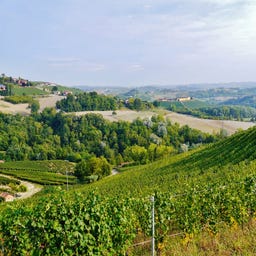
The Langhe, a magical hilly region in Piedmont, is a paradise for wine lovers and gourmets. Renowned for its Barolo and Barbaresco wines, the area boasts endless vineyards and picturesque hilltop villages.
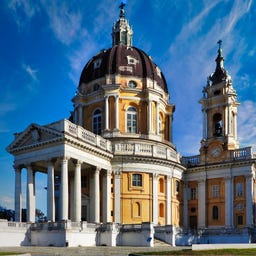
Majestically, the Basilica di Superga sits atop a 672-meter-high hill overlooking Turin, offering you a breathtaking view of the city and the Alps. This magnificent Baroque structure was commissioned by King Vittorio Amedeo II in gratitude for his victory over the French and was built between 1717 and 1731 according to the plans of architect Filippo Juvarra.
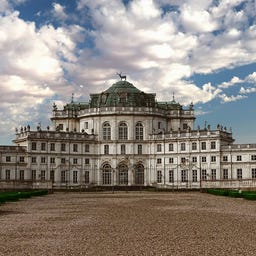
Just 10 kilometers southwest of Turin, you will find one of the most magnificent hunting lodges in the Italian Piedmont: the Palazzina di Caccia di Stupinigi. Built by Filippo Juvarra between 1729 and 1733 for the House of Savoy, the palace impresses with its distinctive cross-shaped layout and the oval main hall featuring the stunning ceiling fresco "Triumph of Diana."
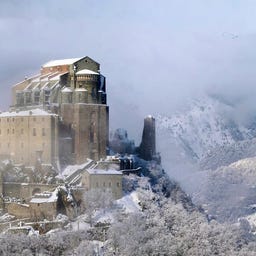
Majestically, the Sacra di San Michele stands on Monte Pirchiriano above the Susa Valley - this landmark of the Piedmont region was founded as a Benedictine monastery as early as the late 10th century.
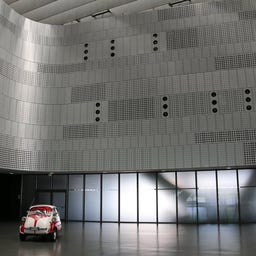
At the renowned Museo dell'Automobile di Torino, you can explore one of the most significant automobile collections in the world, which has documented the history of mobility since its founding in 1933. Spanning three floors and over 19,000 square meters, the fully modernized museum, reopened in 2011, showcases around 160 historical vehicles from 1769 to 1996. The building, designed by Amedeo Albertini, not only features the impressive main exhibition but also houses a restoration school and a section called "Garage" for exhibits not currently on display. Recognized by the prestigious Times newspaper in 2013 as one of the 50 best museums worldwide, MAUTO also offers visitors a virtual tour that you can explore from home.
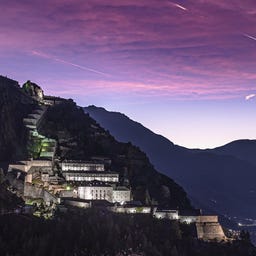
High above the Chisone Valley stands the Forte di Fenestrelle, the largest fortress built in the 18th century worldwide and an impressive example of Piedmontese military architecture. Constructed by Ignazio Bertola between 1728 and 1850, the complex stretches over three kilometers and is also known as the "Great Piedmontese Wall."
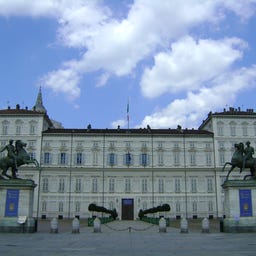
In the heart of Turin stands the Palazzo Reale, which was built in the late 16th century as a ducal residence and served as the political center of the Savoy dynasty for three centuries. This magnificent palace, now a UNESCO World Heritage site, houses the Royal Museums, including the Galleria Sabauda, the Armeria Reale, and the Museo di Antichità.
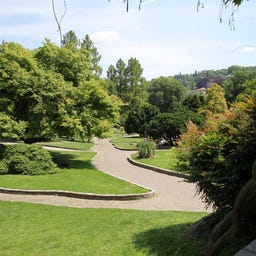
The Parco del Valentino is Turin's most popular city park, stretching over 42 hectares along the picturesque left bank of the Po River. At the heart of the park stands the Castello del Valentino, built between 1630 and 1660, which once served as a summer residence for the Savoy family.
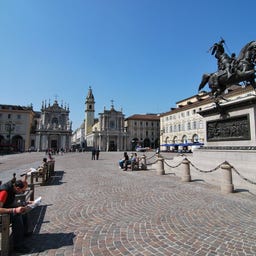
The elegant Piazza San Carlo is considered by the people of Turin as the "living room of the city" and connects Via Roma with Piazza Castello in the historic center. Originally established in the 17th century as a royal marketplace, the square is lined with magnificent Baroque facades and the two twin churches, Santa Cristina and San Carlo.

At the state-of-the-art Allianz Stadium, home of Juventus Turin, you experience Italian football in its most innovative form. Opened in 2011, the stadium was the first club-owned stadium in Italy and impresses with its distinctive architecture made of 7,000 aluminum panels and a floating roof.

In the Parco del Valentino in Turin, you can explore the Borgo e Rocca Medievale, a detailed replica of a Piedmontese village complete with a 15th-century castle. This ensemble, built in 1884 under the direction of Alfredo d'Andrade, was originally created for an exhibition but was designed from the start to be a permanent attraction.
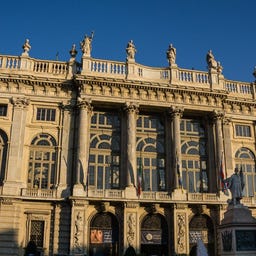
In the heart of Turin, you will find the fascinating Palazzo Madama, a building that encapsulates the city's 2000-year history—from a Roman fortress to a baroque city palace. The magnificent façade, designed by Filippo Juvarra between 1716 and 1718, harmoniously blends with the medieval elements of the original fortress built by the Savoia-Acaja family in the 14th century.
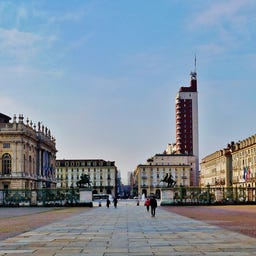
Piazza Castello is the vibrant heart of Turin, where the four main streets of the city intersect under elegant arcades. Here stands the impressive Palazzo Madama, built on the foundations of a Roman city gate from the 1st century, and the square took on its current form thanks to Ascanio Vittozzi in 1583.
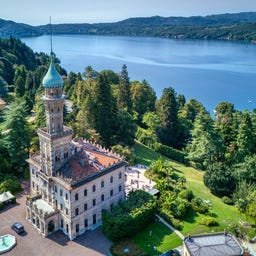
On the shores of Lago d'Orta, the fairy-tale Villa Crespi rises, built in 1879 by Cristoforo Benigno Crespi as a summer residence. With its Moorish architecture, distinctive minaret, and intricately decorated stucco walls in Arabic style, it stands out clearly from the surrounding Piedmont landscape.
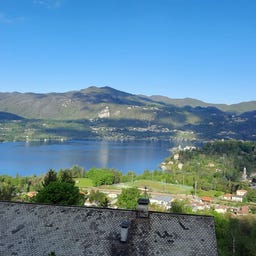
The picturesque Lago d'Orta in the Italian Piedmont enchants you with its central island San Giulio, where the first settlers lived as early as the Neolithic period. Known in the Middle Ages as the "Lake of San Giulio," the westernmost of the large pre-Alpine lakes has been referred to by its current name since the 17th century.
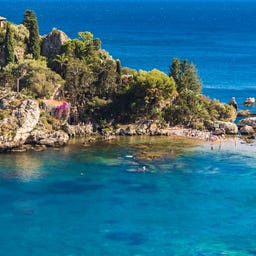
On a small island in Lago Maggiore, you will find Isola Bella, one of the famous Borromean Islands. What was once just a rocky outcrop with a fishing village was transformed into a magnificent estate by the Borromeo family starting in 1632 - featuring an impressive palace and terraced gardens.
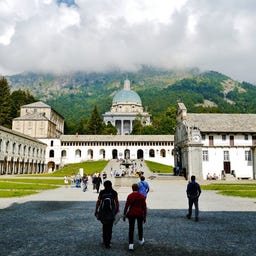
High above the Piedmont town of Biella stands the Santuario di Oropa, one of the most significant Marian shrines in Italy, attracting pilgrims from all over the world since the 4th century. At the heart of this expansive complex, which is a UNESCO World Heritage site, you will find the mysterious Gothic statue of the Black Madonna from the 14th century, to whom numerous miracles are attributed.
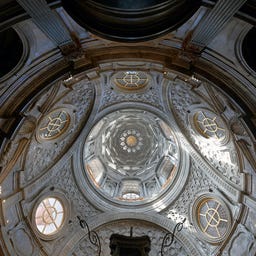
In the Cathedral of Turin, you will find one of the most fascinating examples of 17th-century Baroque architecture with the Chapel of the Holy Shroud. Commissioned by Duke Carlo Emanuele I and completed by Guarino Guarini, the chapel impresses with its visually complex dome made of six stacked arches and an intricate black-and-white marble floor.
The Mercato di Porta Palazzo is the largest open-air market in Europe and impossible to miss on Piazza della Repubblica. From Monday to Friday, it's open from 7:00 AM to 2:00 PM, and on Saturdays until 4:30 PM. You'll find a wide variety of Italian specialties here, and you can also sample street food in the covered market hall. Beyond food, the market offers everything from household goods and textiles to Moroccan lanterns and African masks.
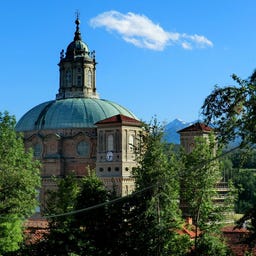
In the Piedmontese town of Vicoforte, you will find one of the most impressive church domes in Italy - the largest elliptical dome in the world, standing at 74 meters high. This magnificent structure was commissioned in 1596 by Duke Carlo Emanuele I of Savoy and combines elements of Mannerism and Baroque styles.
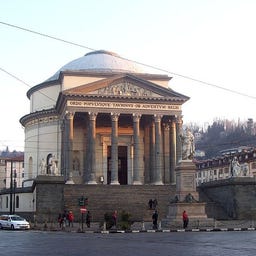
The majestic Chiesa della Gran Madre di Dio stands on the right bank of the Po River and offers one of the most famous views of Turin's historic center. Designed by Ferdinando Bonsignore after the model of the Roman Pantheon, the church was commissioned in 1818 by King Vittorio Emanuele I. as a thank you for his return after the Napoleonic occupation.
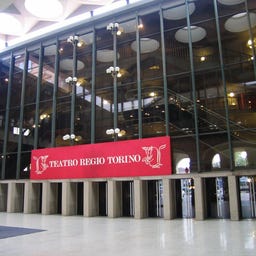
The Teatro Regio in Turin is one of the most important opera houses in Europe, impressing with its magnificent 18th-century Rococo facade, which is now a UNESCO World Heritage site. After its opening in 1740, the theater witnessed numerous historic moments, including the world premieres of Puccini's "La Bohème" and "Manon Lescaut," before being completely destroyed by a fire in 1936 and rebuilt in a modern style in 1973.
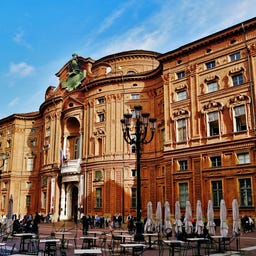
In the heart of Turin stands the Palazzo Carignano, an outstanding example of Piedmontese Baroque from the 17th century. Designed by Guarino Guarini, the palace features its distinctive C-shape and richly decorated facade, built between 1679 and 1685 for the Carignano family.

On the picturesque Isola Bella in Lake Maggiore stands the magnificent Palazzo Borromeo - a baroque masterpiece that Carlo III Borromeo began constructing in 1632 in honor of his wife Isabella d'Adda. The impressive palace, with its 80-meter-long facade, now houses a museum filled with valuable art treasures, including paintings by Raphael and Titian, as well as Flemish tapestries from the 16th century.

The impressive Basilica di Maria Ausiliatrice in the Turin district of Valdocco is not only an important Catholic sanctuary but also the final resting place of Saint Don Giovanni Bosco. The neoclassical building, inspired by the facade of the Basilica San Giorgio Maggiore in Venice, was inaugurated in 1868 and expanded in the 1930s.
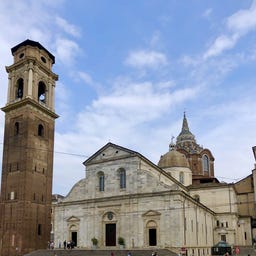
The Duomo di Torino, Turin's most important Catholic church and the only surviving sacred building from the Renaissance period, was built between 1491 and 1505 on the foundations of three early Christian predecessor churches. The white marble facade with its three portals and the bell tower, which was raised in the 18th century, still define the cathedral's appearance at Piazza San Giovanni.
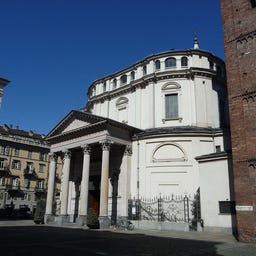
In the heart of Turin stands the Santuario della Consolata, the city's most significant Marian shrine, with a history dating back to the 5th century. The current Baroque structure, an architectural masterpiece by Guarino Guarini, Filippo Juvarra, and Carlo Ceppi, captivates with its unique layout featuring an elliptical body and a hexagonal nave.

In the heart of Turin, the Musei Reali spans an impressive 50,000 square meters, a vast museum complex that has brought together eight significant cultural sites since 2014. Here, you can find under one roof the magnificent Royal Palace, the Royal Gardens, the Royal Library, the Royal Armory, the Galleria Sabauda, the Museum of Antiquities, parts of the Palazzo Chiablese, and the Chapel of the Holy Shroud.
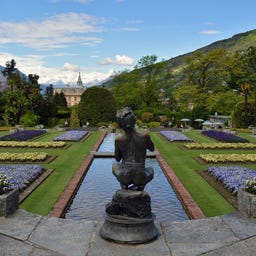
In the Botanical Gardens of Villa Taranto at Lake Maggiore, you will find one of Italy's most significant botanical collections, spanning 16 hectares. The Scottish captain Neil Boyd McEacharn transformed the area into an expansive garden featuring plants from around the world starting in 1931, and he opened it to the public in 1952.
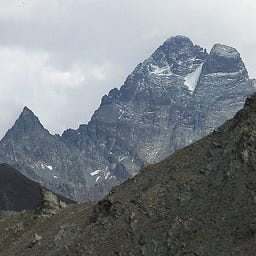
Majestically, the Monviso rises as the highest peak of the Cottian Alps with its distinctive pyramid shape above the western Po Valley. From its slopes flows Italy's longest river, the Po, and since 2013, the area has been part of a UNESCO Biosphere Reserve.
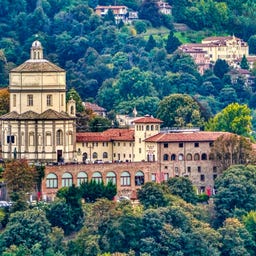
Majestically, the Chiesa di Santa Maria del Monte dei Cappuccini sits atop a hill overlooking Turin, offering you one of the most beautiful panoramic views of the city and the Alps. The church, which began construction in the 16th century and was completed in 1656, combines late Renaissance and Baroque elements and stands on historic ground, where a Roman temple dedicated to Jupiter existed as early as the 1st century BC. Inside, you can admire impressive frescoes by Isidoro Bianchi and a curious reminder of the Napoleonic Wars—a cannonball embedded in the church wall. In the south wing of the adjacent monastery, you will find the National Mountain Museum, and halfway up the hill, you can stop for a meal at a restaurant.
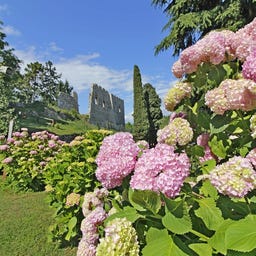
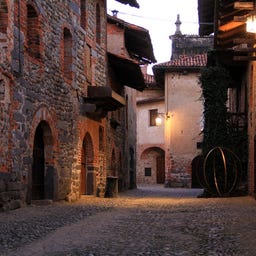
In the northern Italian region of Piedmont, you can explore the Ricetto di Candelo, one of the best-preserved medieval fortifications in Europe, with a history dating back to the late 13th century. The approximately 200 characteristic cell houses, known as "Cellules," now house craft shops, cultural institutions, and a small museum.
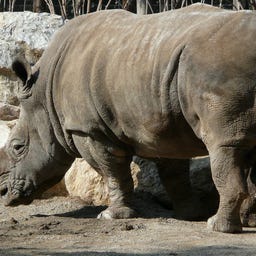
In the modern zoo park Zoom Torino, located south of Turin, you can embark on an immersive journey across 160,000 square meters featuring eleven meticulously designed habitats with 84 different animal species. Opened in 2009 and designed by Gianluigi Casetta, the park places a strong emphasis on species-appropriate care and the protection of endangered species.
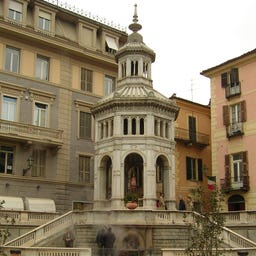
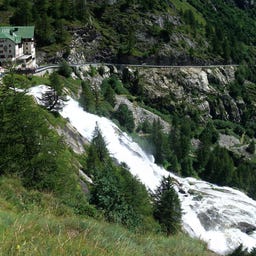
With an impressive drop of 143 meters over a 200-meter-long rock face, the Cascata del Toce is one of the most spectacular waterfalls in the Alps. Also known as "La Frua," this waterfall is located at an altitude of 1,675 meters in the municipality of Formazza and has captivated notable visitors since the 19th century, including Richard Wagner, who described it as "overwhelmingly beautiful" in 1852.
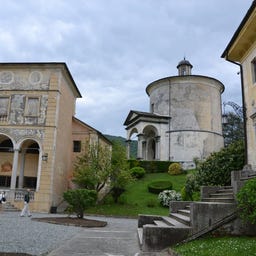
High above the town of Varallo, you will find the oldest and most artistically significant of the northern Italian Sacri Monti, which has been a UNESCO World Heritage site since 2003. This pilgrimage site, conceived as the "New Jerusalem" by the Franciscan Bernardino Caimi in the late 15th century, consists of a basilica and 44 intricately designed chapels, where around 800 life-sized terracotta and wooden figures depict biblical scenes.
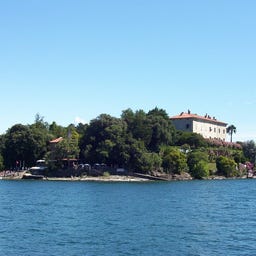
On the largest of the Borromean Islands in Lake Maggiore, Isola Madre offers you a fascinating blend of history and botanical beauty. The magnificent Palazzo Borromeo, dating back to the 16th century, overlooks an 8-hectare English landscape garden, which is considered one of the most beautiful of its kind in Italy.

The Piazza Statuto is one of the most important squares in the western center of Turin, characterized by elegant colonnades and neoclassical buildings designed by Giuseppe Bollati. Since its creation in 1863, it has been the site of significant historical events, from the protests against the relocation of the capital in 1864 to the major workers' demonstrations of the 1960s.
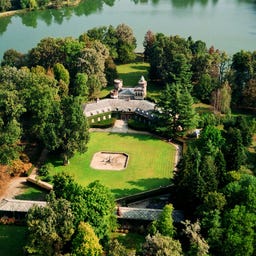
As the second largest walled park in Europe, the Parco Naturale La Mandria spans 3,000 hectares between the Stura di Lanzo and Ceronda rivers, northwest of Turin. The first regional park in Italy was originally established in the mid-19th century by King Vittorio Emanuele II to protect the royal quarters in the Castello della Mandria, before being officially designated as a nature reserve in 1978.

On the banks of the Po River stands the Castello del Valentino, an impressive Baroque castle from the 16th century that is now part of the UNESCO World Heritage. Originally built by the Birago family as a villa, the castle underwent its most magnificent transformation under Cristina di Borbone, who received it as a wedding gift and had it expanded in the French Baroque style.
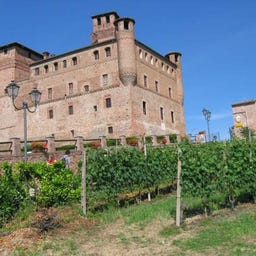
Majestically, the well-preserved Castello di Grinzane Cavour overlooks the UNESCO vineyards of Piedmont, shaping the region since the 13th century. Within its rectangular walls, featuring a distinctive U-shaped layout and prominent tower, you can find the Enoteca Regionale Piemontese Cavour and the Museum of Langhe.
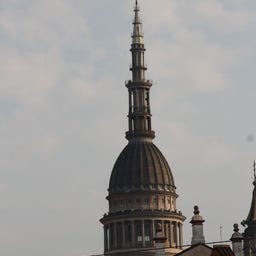
The majestic Basilica di San Gaudenzio in Novara impresses mainly with its 121-meter-high dome, which the architect Alessandro Antonelli built entirely from local bricks in the 19th century.
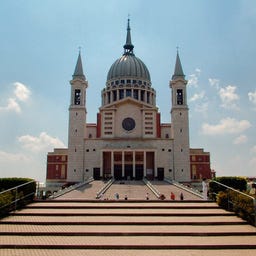
On Colle Don Bosco, not far from Turin, stands the impressive Basilica di Don Bosco - a modern interpretation of classic church architecture from the 1960s. Dedicated to Saint Giovanni Bosco, the basilica features two levels, each accommodating 700 visitors, with the lower level serving as a crypt that houses significant relics of the saint.
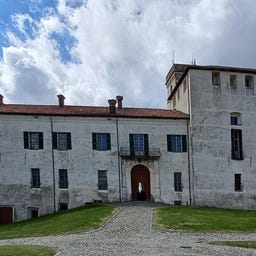
High above the Piedmontese Canavese stands the Castello di Masino, which has its origins in the 11th century and was built by the Valperga family. After a tumultuous history filled with power struggles, the castle was transformed by the French in the 16th century into a magnificent noble residence, impressing visitors today with its intricate frescoes, a remarkable collection of carriages, and a historic library.
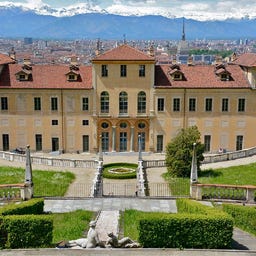
High above Turin stands the Villa della Regina, a magnificent 17th-century villa originally built for Cardinal Maurizio di Savoia. As part of the Residences of the House of Savoy, the villa was declared a UNESCO World Heritage Site in 1997 and now impresses visitors with its elaborate frescoes, four Chinese cabinets, and one of the most beautiful gardens in Italy, following extensive restoration.
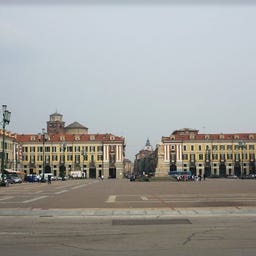
The almost 24,000 square meter Piazza Galimberti is the vibrant main square of Cuneo, affectionately referred to by locals as the "Salotto di Cuneo." Built in a neoclassical style around 1800, the square was created after Napoleon's troops demolished the city walls and was later expanded to its current size due to the booming silk trade.
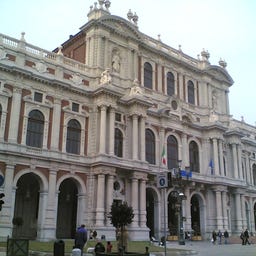
In the magnificent Palazzo Carignano, a Baroque building from the 17th century, you will find the oldest and most important museum dedicated to the Italian Risorgimento. Spanning 3,500 square meters and 30 rooms, the museum traces the history of Italy from the siege of Turin in 1706 to the end of World War I.

High above the Italian town of Arona stands the Colosso di San Carlo Borromeo, an impressive 35-meter tall copper statue that was considered the tallest statue in the world for almost two centuries. Designed by Giovanni Battista Crespi, this colossal statue was erected between 1624 and 1698 in honor of Saint Carlo Borromeo and sits atop a nearly 12-meter high granite pedestal.

In the heart of historic Turin, you will find the Teatro Carignano, the oldest theater in the city, which has been continuously in operation since the early 18th century. This neoclassical building, with its bright facade, features an elegant auditorium with 875 seats and three tiers, crowned by an impressive ceiling fresco of the "Triumph of Bacchus" from 1845.
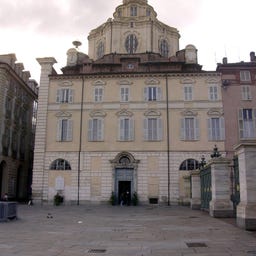
The Chiesa di San Lorenzo captivates with its unique dome featuring a star-shaped design and 16 overlapping ribs that rise 50 meters high. This sacred building, constructed between 1634 and 1680 under the significant guidance of architect Guarino Guarini, was commissioned by Duke Emanuele Filiberto I after his victory in the Battle of San Quintino.
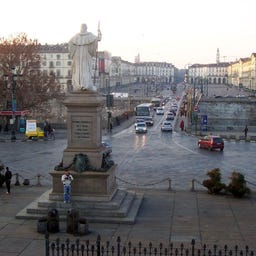
Piazza Vittorio Veneto is one of the most significant historical squares in Turin, impressing you with its elegant arcades and neoclassical buildings from the early 19th century. Originally designed as a military parade ground, the square was renamed in 1920 in honor of the decisive battle of World War I and has since become a vibrant center of urban life.

In the picturesque hilly landscape of Piedmont, you will find the Abbazia di Vezzolano, one of the most significant medieval buildings in the region. According to legend, the church was founded in 773 by Charlemagne after a mystical encounter with three skeletons, with the first documented mention dating back to 1095.
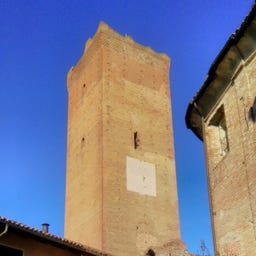
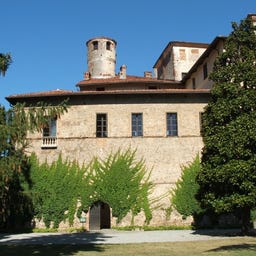
High above the Piedmont town of Manta stands the Castello della Manta, one of the most significant historical castles in Northern Italy from the 12th century. In the magnificent halls, you will find unique fresco cycles from the late Gothic period, which are among the few surviving examples of courtly art from this era, created by an anonymous master around 1420.
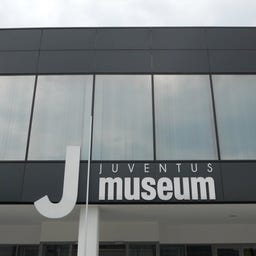
At the J-Museum in Turin, you can experience the fascinating history of the Juventus Football Club since its founding in 1897, all within one of the most modern sports exhibitions in the world. The bilingual multimedia exhibition, which opened in 2012, showcases over 400 historical objects, trophies, and memorabilia from this traditional club.
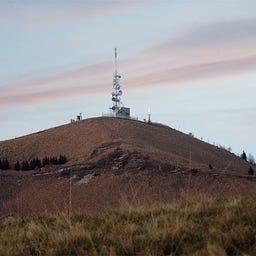
Between Lago Maggiore and Lago d'Orta rises the 1,492-meter-high Mottarone - a granite mountain of the Pennine Alps that offers you one of the most spectacular panoramic views of the region.
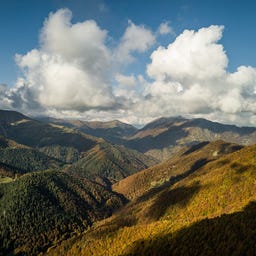
In the Bielese Alps, the Oasi Zegna spans over 100 square kilometers as an accessible nature reserve, rooted in the vision of textile entrepreneur Ermenegildo Zegna from the 1930s. The Panoramica Zegna, built in 1938, winds through the area as a spectacular panoramic road, revealing a mosaic of beech forests, fir woods, and mixed forests.
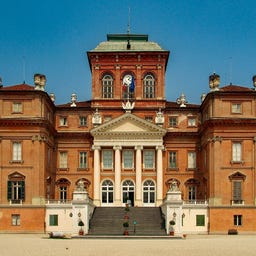
In the picturesque Piedmont, you will find the Castello Reale di Racconigi, one of the most significant residences of the House of Savoy, which has been a UNESCO World Heritage site since 1997. The castle's history dates back to the 11th century when it served as a fortress, before becoming the property of the Savoy in the late 14th century and evolving into a royal summer residence.
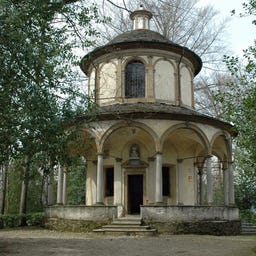
High above the picturesque Lake Orta, you will find the Sacro Monte di Orta, a unique pilgrimage site from the late 16th century that has been a UNESCO World Heritage site since 2003. In 20 artistically designed chapels, the life of Saint Francis of Assisi is depicted through 376 life-sized terracotta figures and numerous frescoes.
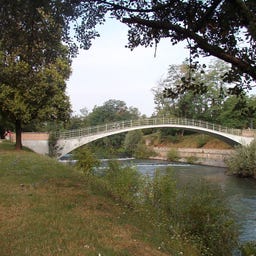
With 83.7 hectares, Parco della Pellerina is the largest city park in Turin and a popular recreational area for locals. The park, which began in the 1930s and was completed in the early 1980s, features two artificial lakes with waterfowl and a natural pond that formed after the flood in 2000.
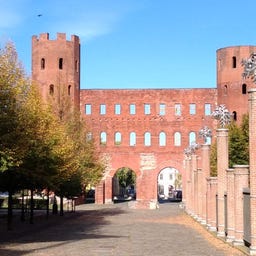
As the best-preserved Roman city gate from the 1st century BC, the Porta Palatina majestically stands with its towers over 30 meters high in the heart of Turin. This impressive structure has a rich history, having served as a medieval castle, a prison in the 18th century, and undergoing extensive restoration in the 1930s.

In northern Italy, in Re, stands the Santuario della Madonna del Sangue, an impressive Marian sanctuary in neo-Byzantine style with a 51-meter-high dome. The construction is based on a documented miracle from 1494, when a Madonna fresco began to bleed after being struck by a stone.
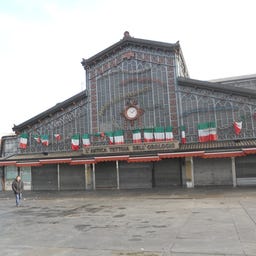
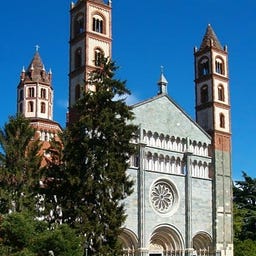
The Basilica di Sant'Andrea in Vercelli is not only the first Gothic building in Piedmont but also one of the earliest examples of this architecture in all of Italy. The impressive church, whose foundation stone was laid in 1219 under Cardinal Guala Bicchieri, captivates with its harmonious color scheme of white plaster, red bricks, and green accents.
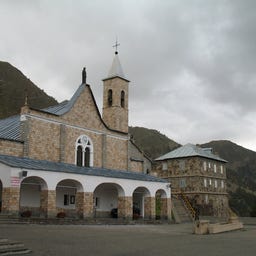
At an altitude of 2,035 meters, the Santuario di Sant'Anna stands as one of the highest sanctuaries in Europe in the Maritime Alps. Originally founded in the 11th/12th century as a hospice for travelers, the site became a pilgrimage destination according to legend, following an apparition of Saint Anne to a shepherdess named Anna Bagnis.

High above the city of Rivoli stands the impressive Castello di Rivoli, which dates back to the 9th century as a defensive structure and now houses one of Italy's most significant contemporary art museums. As part of the Residences of the House of Savoy, the fortress, which came into the possession of the Dukes of Savoy in the 12th century, has been declared a UNESCO World Heritage Site.

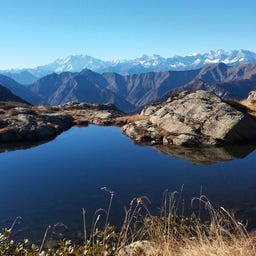
In the Parco nazionale della Val Grande, the largest wilderness area in the Italian Alps, you can expect an untouched mountain landscape with rugged peaks and deep valleys over more than 17,000 hectares. This area, which has been inhabited since the Iron Age and served as a hideout for partisans during World War II, was largely abandoned after the war and has since returned to nature.

In the heart of Turin's historic center, you discover Piazza Solferino, named after the significant Battle of Solferino in the Italian War of Independence. Once used as a wood market, the square is now dominated by the impressive Fontana Angelica, featuring four sculptural groups that represent the seasons. At the center stands the magnificent equestrian statue of Ferdinando di Savoia-Genova from 1877, while the surrounding buildings in elegant Liberty style frame the square. After extensive renovations, the Piazza has been shining anew since 2013, complete with a modern sundial and restored historical monuments.
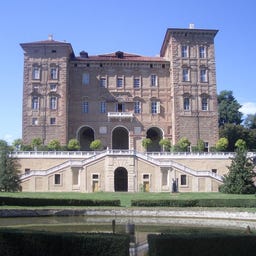
In the picturesque Piedmont, you will find the Castello Ducale di Agliè, one of the most significant residences of the House of Savoy, which has been a UNESCO World Heritage Site since 1997. The castle, built in the 12th century by the San Martino family, was taken over by the Savoy in 1823 and magnificently renovated before becoming state property in 1939 and being transformed into a museum.
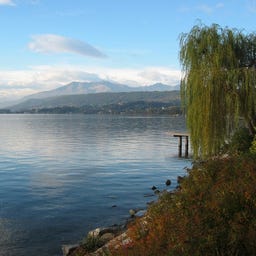
The third largest lake in Piedmont was formed by glacial activity and is now a popular destination with beaches, boat rentals, and campsites. Significant Bronze Age settlements have been discovered along its shores, which have been part of the UNESCO World Heritage since 2011.

The Cottian Alps form a majestic mountain range between France and Italy, named after the ancient king Marcus Julius Cottius from the 1st century BC. With Monte Viso (3,841 m) as its highest peak, the range stretches across the Italian provinces of Cuneo and Turin, as well as the French departments of Savoie, Hautes-Alpes, and Alpes-de-Haute-Provence.
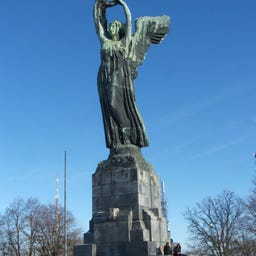
High above Turin stands the Faro della Vittoria, an impressive victory monument from the early 20th century that you can recognize from afar by its nighttime beacon. The 18.5-meter tall bronze statue was commissioned in 1928 by Giovanni Agnelli and created by sculptor Edoardo Rubino to commemorate Italy's victory in World War I.

Nestled between the Piedmontese mountains, you will find Lago di Mergozzo, which was part of Lago Maggiore until 500 years ago, when deposits from the Toce River separated the two lakes. With its crystal-clear waters, protected by a strict ban on motorboats and the absence of industry, it is one of the cleanest lakes in Italy. The lake stretches for 2.5 kilometers and reaches depths of up to 74 meters, while being entirely located within the nature reserve "Lago di Mergozzo e Mont'Orfano." Here, you can enjoy kayaking, windsurfing, or fishing - or simply savor the untouched nature of the fourth largest lake in Piedmont.
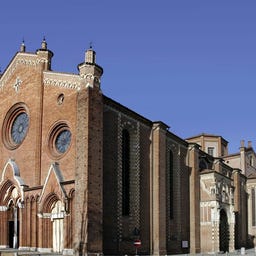
In the heart of Asti stands the Cattedrale di Santa Maria Assunta, one of the largest churches in Piedmont, measuring an impressive 82 meters in length and 24 meters in height. The current structure, built between the 13th and 15th centuries, is considered a masterpiece of Lombard Gothic architecture and captivates with its three-nave layout featuring French influences.
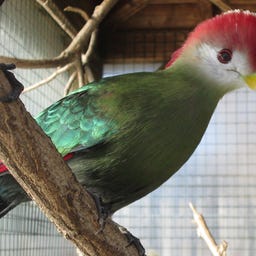
At the Pombia Safari Park north of Milan, you can expect an unusual combination of a zoo, safari experience, and amusement park. Since its founding in 1976 by Angelo Lombardi, the facility has developed into a versatile tourist complex where you can observe animals in naturalistic enclosures and take safari tours from your vehicle.

At an altitude of 3,538 meters stands the Rocciamelone Sanctuary, the highest in Europe, crowned by an impressive bronze Madonna from 1899. The first documented ascent was achieved by Bonifacio Rotario D'Asti in the 14th century, when the mountain was still considered the highest peak in the Alps.
The decommissioned bobsled track Cesana Pariol in the Italian Alps near Turin is a testament to the region's Olympic legacy - it hosted the bobsleigh, skeleton, and luge events during the 2006 Winter Games. The 1,411-meter-long track, featuring 19 curves, was completed in late 2004 and witnessed significant sporting achievements, including the Olympic victory of Italian luger Armin Zöggeler.
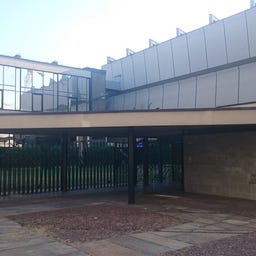
As the first municipal museum of modern art in Italy, GAM Torino now houses an impressive collection of over 47,000 artworks, including pieces by Antonio Canova, Pablo Picasso, and Andy Warhol. After being destroyed in World War II, the museum was reopened in 1959 in a modern building designed by architects Carlo Bassi and Goffredo Boschetti.
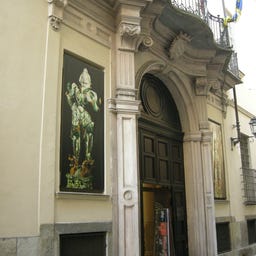
In the historic Palazzo Mazzonis in the center of Turin, you will find one of the most significant collections of Asian art in Italy. The museum, which opened in 2008, showcases around 1,500 selected exhibits from its collection of over 2,300 works, featuring impressive pieces from India, China, Japan, and the Islamic cultural sphere across five departments.
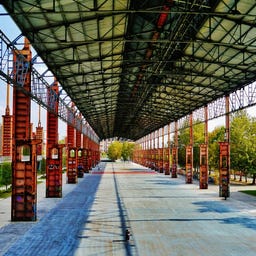
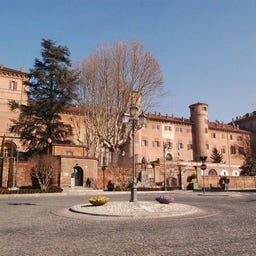
Majestically, the Castello di Moncalieri overlooks the historic center of the city of the same name near Turin - an impressive fortress built in the 12th century by Tommaso I di Savoia to control the southern access to Turin.
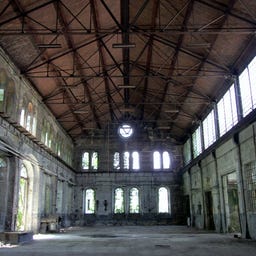
In the impressive halls of the Officine Grandi Riparazioni, where locomotives and railway cars were once maintained since the late 19th century, the cultural life of Turin now thrives. After its closure in the 1990s and the threat of demolition, the industrial complex was reopened in 2017 as a multidisciplinary cultural center.
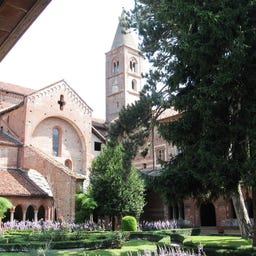
In the picturesque province of Cuneo, you will find one of the most significant medieval buildings in Piedmont, the Abbazia di Santa Maria di Staffarda. Founded in the 12th century by Marquis Manfredo I of Saluzzo, this Cistercian abbey combines Romanesque and Gothic architectural elements and impresses with its well-preserved layout, which includes a church, cloister, refectory, and dormitory.
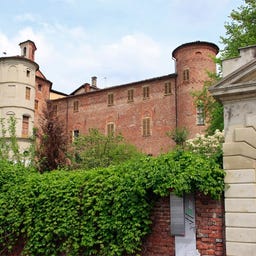

The magnificent Villa La Tesoriera, built in the early 18th century, was constructed as a residence for Aymo Ferrero, the treasurer of the House of Savoy, and was inaugurated in 1715 in the presence of Vittorio Amedeo II. This baroque estate, which now serves as a municipal music library, is surrounded by a vast public park known as Parco della Tesoriera.
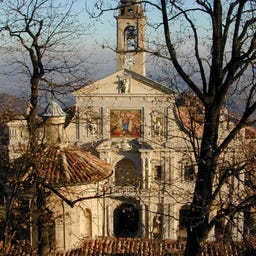
On one of the highest hills of Monferrato, you will find the Sacro Monte di Crea, a fascinating complex of 23 chapels and 5 hermitages that has attracted pilgrims since the Middle Ages. The intricately designed buildings, depicting scenes from the lives of Mary and Jesus, were constructed starting in 1589 under Duke Vincenzo I Gonzaga and were extensively restored in the 19th century.
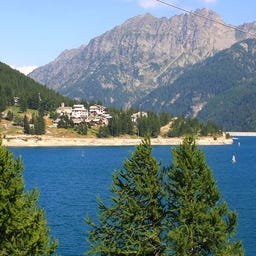
In the Italian Graian Alps, at an altitude of 1,556 meters, you will find the Lago di Ceresole, an impressive reservoir with turquoise blue water stretching 3.2 kilometers long. The dam, inaugurated in 1931 by Prince Umberto of Savoy, is bordered by a 52-meter high gravity dam and supplies energy to the Rosone hydroelectric power plant.
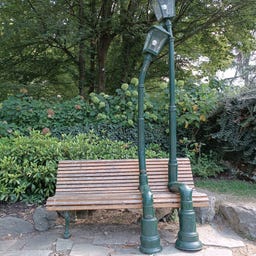
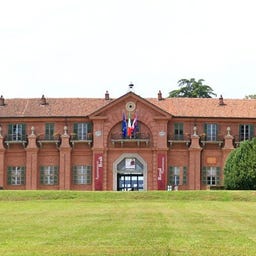
In the heart of the La Mandria nature park stands the impressive Castello della Mandria, originally built in 1693 as a horse breeding facility and later expanded into a magnificent palace in the Piedmontese Baroque style by architects Michelangelo Garove and Filippo Juvarra in the 18th century.
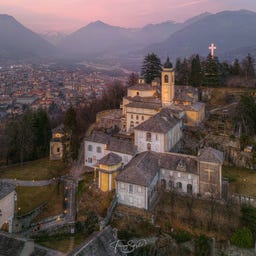
High above Domodossola, you will find the Sacro Monte Calvario, an impressive religious complex from the 17th century that has been a UNESCO World Heritage site since 2003. On the historic Mattarella Hill, where a medieval castle once stood, a paved path takes you past 12 intricately designed chapels leading to the octagonal Baroque sanctuary.
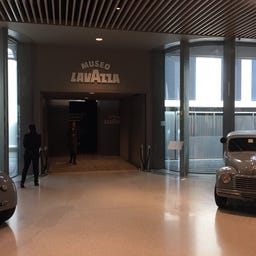
At the modern headquarters of Nuvola Lavazza in Turin, you can explore an interactive museum that brings to life the history of Italian coffee culture and the Lavazza family in the 20th century. Spanning 1200 square meters, a circular tour takes you through five themed areas across two floors, designed by the renowned design studio Ralph Appelbaum.
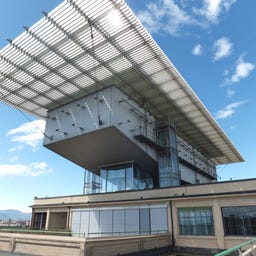
On the roof of the former Lingotto factory in Turin, an architectural highlight awaits you: the Agnelli Pinacoteca sits in a futuristic, crystal-like structure 34 meters above the historic Fiat test track. The museum building "Lo Scrigno," which opened in 2002, was designed by star architect Renzo Piano and houses the private art collection of Gianni and Marella Agnelli.
